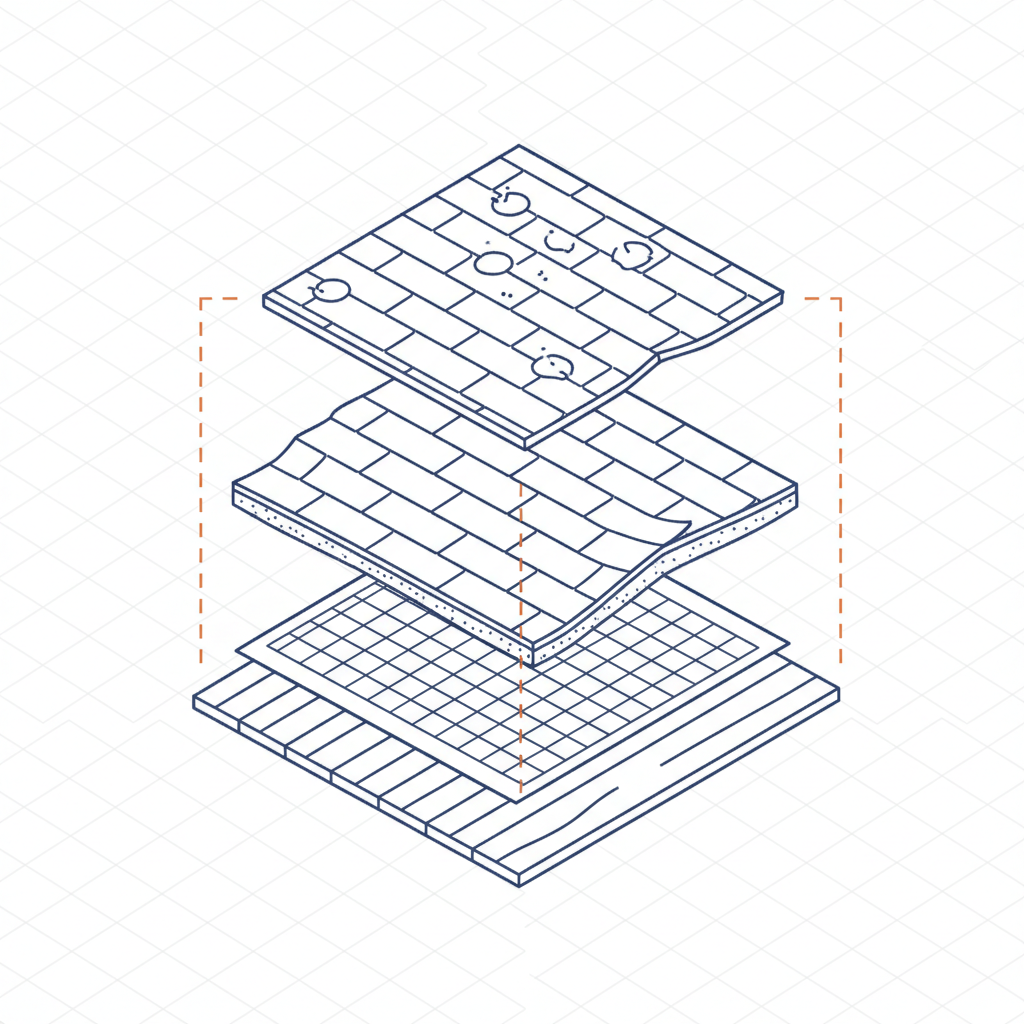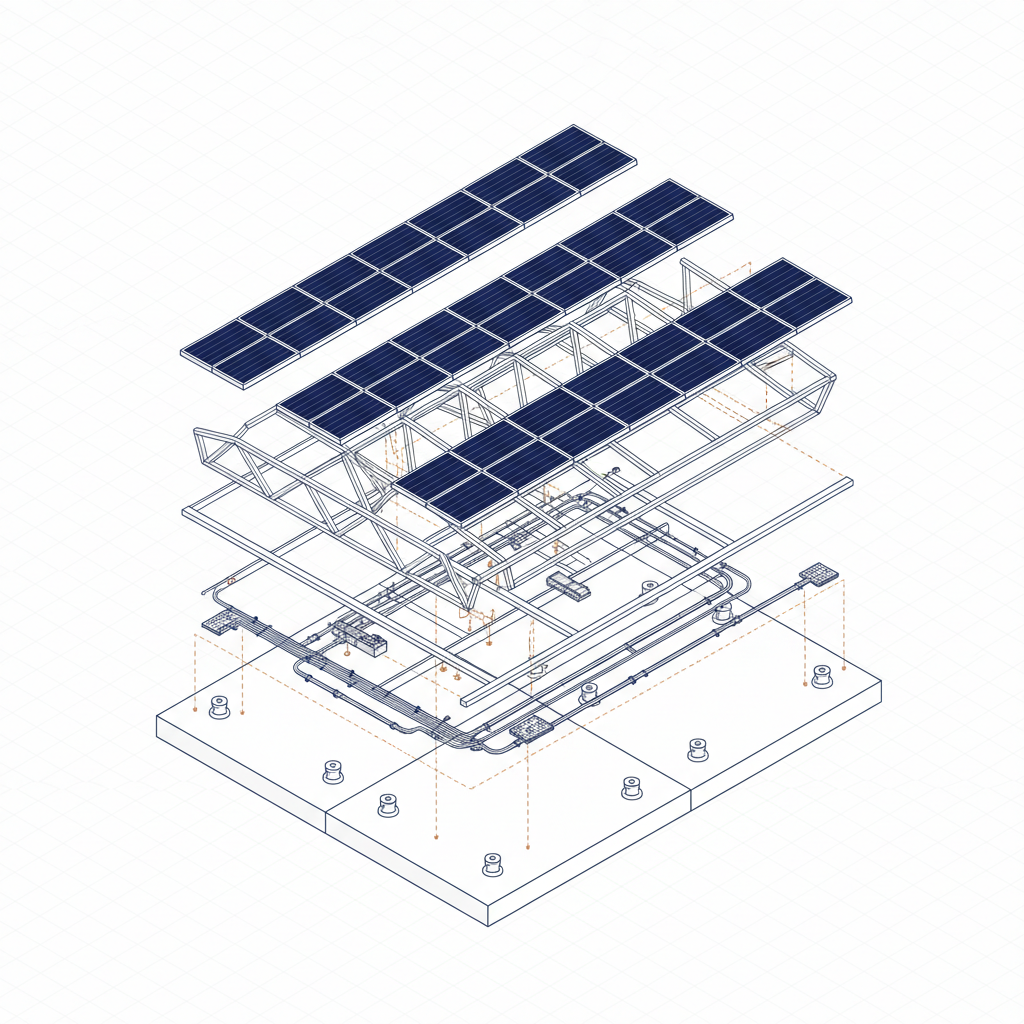When your roof has a problem, the last thing you need is a confusing list of options. Terms like “repair,” “replacement,” and “reroofing” are often used interchangeably, creating uncertainty for homeowners at a stressful time. Making the wrong choice can lead to recurring problems and unexpected costs—the very surprises our process is designed to eliminate.
At RocStout Roofing, we believe a confident decision starts with clear information. This guide will provide a straightforward explanation of each roofing service. Our goal is to replace contractor jargon with predictable solutions, so you can understand exactly what your roof needs and why.
Roof Repair: The Targeted Solution for Specific Issues
A roof repair is a precise, surgical fix designed to address a specific point of failure on an otherwise healthy roof. Think of it as addressing one problem area to extend the life of the entire system. A repair is the clear and correct choice when you have a roof that is years away from the end of its intended lifespan.
A roof repair is the appropriate solution for:
-
Isolated Damage: A handful of shingles are missing or damaged from a recent storm.
-
Localized Leaks: Water intrusion is confined to a specific area, such as around a chimney, vent pipe, or skylight.
-
Minor Flashing Issues: The metal strips that protect vulnerable areas are bent or have come loose but the surrounding shingles are intact.
The goal of a professional repair is to seamlessly restore the integrity of your roof, stopping a small problem from becoming a large and costly one.
Roof Replacement: The Comprehensive Solution for Long-Term Protection
A full roof replacement is a complete overhaul of your roofing system. The process involves tearing off all old materials down to the structural deck, inspecting the deck for any damage, and installing a brand-new, fully integrated roofing system. This is the definitive, long-term solution for a roof that has reached the end of its life.
A roof replacement is the necessary course of action when:
-
The Roof’s Lifespan is Expired: An asphalt shingle roof is approaching or has passed the 20-25 year mark and is showing signs of aging.
-
Damage is Widespread: Shingles are curling, cracking, or showing significant granule loss across multiple areas of the roof.
-
Repairs are Frequent: You find yourself calling for repairs every year. The cost of repeated fixes can quickly add up, making a replacement the more cost-effective choice.
-
There Are Underlying Issues: Evidence of soft spots on the roof or persistent leaks suggests potential damage to the underlying decking, which can only be addressed with a full tear-off.
A roof replacement is a major investment in your home that provides decades of predictable protection and peace of mind. It’s often a necessary step when navigating significant storm damage through insurance claims.
What About “Reroofing”? A Word of Caution
“Reroofing” is the practice of installing a new layer of shingles directly on top of the existing one. While it may be presented as a cheaper, quicker alternative to a full replacement, it is a shortcut that goes against our “No Surprises” philosophy.
Here’s why we advise homeowners against reroofing:
-
It Hides Potential Problems: Reroofing covers up any existing issues with the roof deck, like soft spots or rot, trapping moisture and allowing the damage to worsen unseen.
-
It Adds Excessive Weight: A second layer of asphalt shingles adds a significant amount of weight that the home’s structure may not be designed to support.
-
It’s a Temporary Fix: A reroof does not last as long as a proper replacement and can complicate future work, ultimately costing more in the long run.
A true professional addresses the root cause of a problem; they don’t simply cover it up. A full roof replacement is the only way to guarantee the integrity of the entire system.
The Right Decision Starts with a Professional Assessment
Choosing between a repair and a replacement isn’t a decision you should have to make based on guesswork. The age of your roof, the extent of the damage, and your long-term plans for the home are all critical factors in determining the most cost-effective and reliable solution.
At RocStout Roofing, our process begins with a thorough, transparent inspection of your entire roofing system. We document our findings and provide you with a clear, straightforward recommendation based on the facts, ensuring you have the information you need to make a confident choice.




